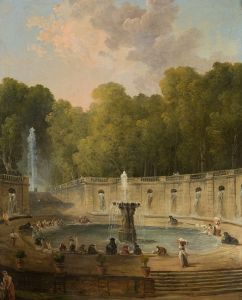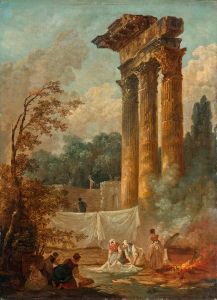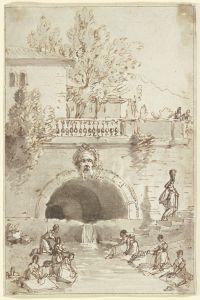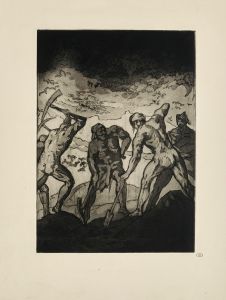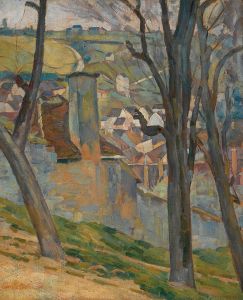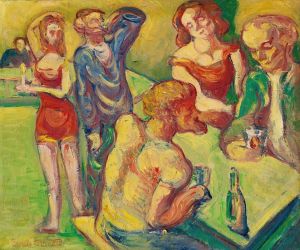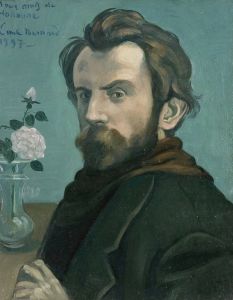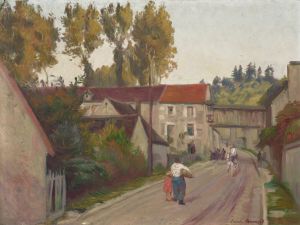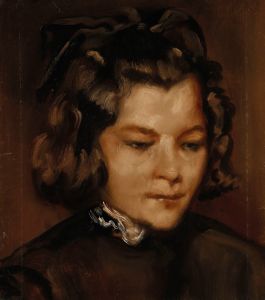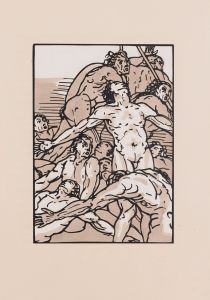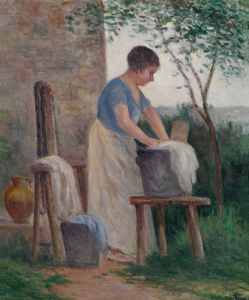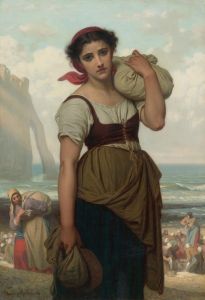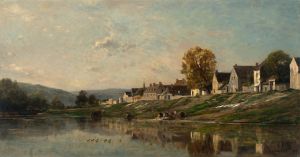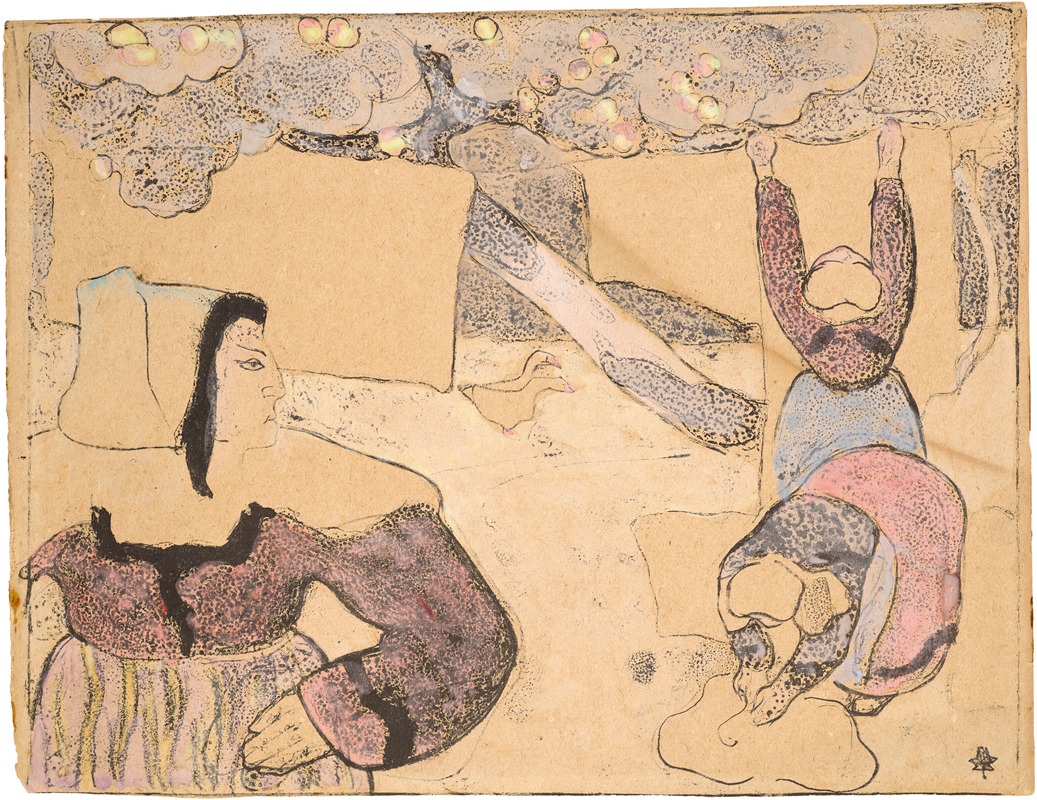
Bretonne étendant le linge, planche issue de Bretonnerie
A hand-painted replica of Emile Bernard’s masterpiece Bretonne étendant le linge, planche issue de Bretonnerie, meticulously crafted by professional artists to capture the true essence of the original. Each piece is created with museum-quality canvas and rare mineral pigments, carefully painted by experienced artists with delicate brushstrokes and rich, layered colors to perfectly recreate the texture of the original artwork. Unlike machine-printed reproductions, this hand-painted version brings the painting to life, infused with the artist’s emotions and skill in every stroke. Whether for personal collection or home decoration, it instantly elevates the artistic atmosphere of any space.
"Bretonne étendant le linge" is a painting by the French artist Émile Bernard, which is part of a series of works collectively known as "Bretonnerie." Émile Bernard, born on April 28, 1868, in Lille, France, was a Post-Impressionist painter and writer who played a significant role in the development of modern art. He is best known for his association with the Pont-Aven School and his collaborations with other notable artists such as Paul Gauguin and Vincent van Gogh.
The painting "Bretonne étendant le linge" depicts a Breton woman engaged in the everyday activity of hanging laundry. This subject matter reflects Bernard's interest in the daily lives and customs of the Breton people, a recurring theme in his work during his time in Brittany. The painting is characterized by its use of bold outlines and flat areas of color, a technique that Bernard and his contemporaries developed and which became known as Cloisonnism. This style was influenced by Japanese prints and medieval stained glass, emphasizing strong contours and simplified forms.
Émile Bernard first visited Brittany in the mid-1880s, where he was captivated by the region's distinctive culture and landscape. The Breton people, with their traditional costumes and rural way of life, provided rich material for his artistic exploration. Bernard's works from this period often depict scenes of Breton women in traditional dress, engaged in various activities such as washing clothes, tending to children, or participating in religious ceremonies.
"Bretonne étendant le linge" is notable for its composition and use of color. The painting captures a moment of quiet domesticity, with the figure of the woman standing out against the backdrop of the Breton countryside. The simplicity of the scene is enhanced by Bernard's use of vibrant, unmodulated colors and strong, defining lines. This approach not only highlights the figure but also imbues the scene with a sense of timelessness and universality.
Bernard's work during this period was influential in the development of Symbolism and Synthetism, movements that sought to convey deeper meanings and emotions through simplified forms and symbolic content. His collaboration with Paul Gauguin was particularly significant, as the two artists exchanged ideas and techniques that would shape the direction of modern art. Bernard's emphasis on the decorative and expressive potential of color and line can be seen in the works of later artists, including the Nabis and the Fauves.
"Bretonne étendant le linge" is part of Bernard's broader exploration of Breton themes, which he continued to revisit throughout his career. The painting is an example of his ability to capture the essence of a moment and the character of a place through his distinctive artistic style. Today, Émile Bernard is recognized as a key figure in the transition from Impressionism to the more abstract and symbolic approaches of the early 20th century.
The painting remains an important work within Bernard's oeuvre, reflecting his deep connection to Brittany and his innovative contributions to the art of his time.





